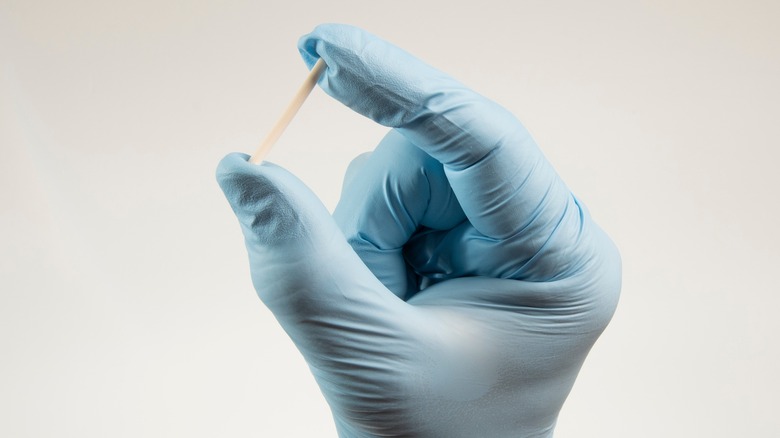What Happens To Your Body When You Get Your Nexplanon Removed
There are many different options for hormonal birth control, depending on varying needs and preferences. One popular option is a contraceptive implant, often referred to by the brand name Nexplanon (via Mayo Clinic). Nexplanon is a good choice for long-term birth control, but you may eventually want to take it out when trying to get pregnant or to try a different form of contraceptive. So what happens when you get it removed?
Nexplanon is an implant that gets inserted beneath the skin of the upper arm, notes Mayo Clinic. The small plastic rod delivers a low, continuous dose of hormones that work to prevent pregnancy by thickening cervical fluid, suppressing ovulation, and thinning the uterine lining. Nexplanon is a good choice for birth control because it can remain in your arm for up to three years, doesn't contain estrogen, and isn't something that you need to think about every single day.
However, there could be side effects for some, including mood swings or depression, abdominal or back pain, decreased libido, headaches, dizziness, and sore breasts. After three years, the implant needs to be removed, and can be replaced immediately to continue preventing pregnancy. But if you want to remove it without replacing it, there's a good chance your body will adjust pretty easily.
What to expect after removing Nexplanon
Once Nexplanon is removed, you should feel totally normal, according to Planned Parenthood. If you were experiencing side effects, they will eventually go away. Your period should also return to how it was before using Nexplanon.
Your arm, however, may take some time to recover. For a few days after the removal, your arm might feel sore, tender, and a little swollen. You might develop some bruising in the area, which should go away within a couple of weeks. You'll need to take extra care of your arm following the removal, making sure to keep it bandaged and covered when necessary.
The removal process is quick and relatively painless (via WebMD). You'll likely get a local anesthetic to numb the area, a small incision will be made near the tip of the rod, and the doctor will gently push it out and then close the incision. A bandage will be applied to reduce bruising and keep the area covered. Most people don't experience any concerning side effects or complications.
Don't forget that as soon as Nexplanon is removed, you can become pregnant. If you don't want to conceive, you should use another form of birth control following removal, such as condoms.


